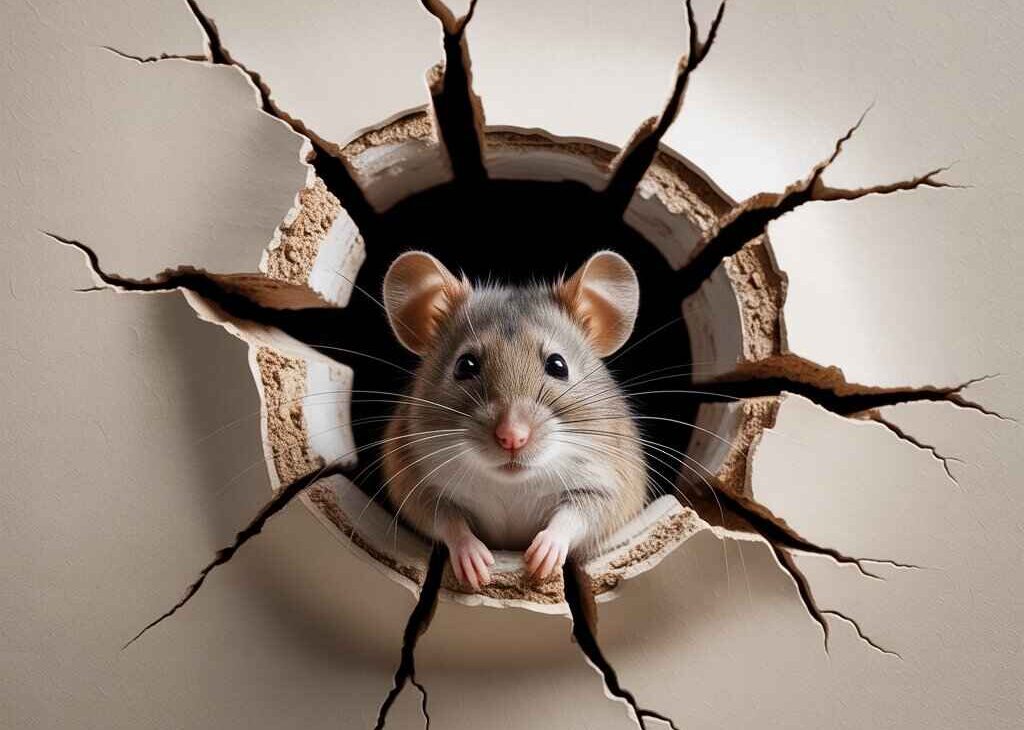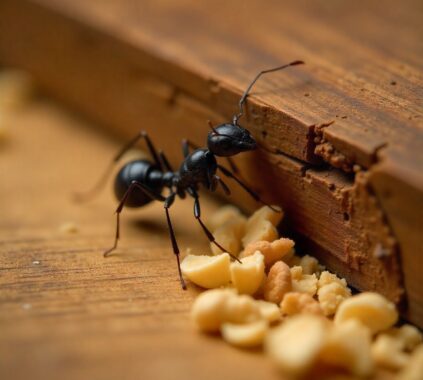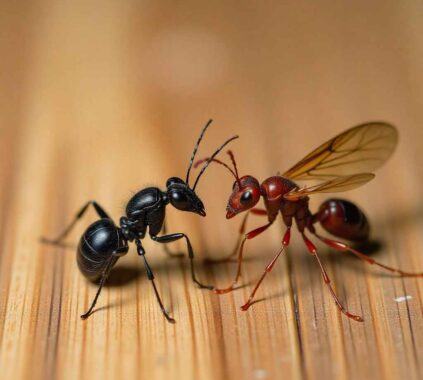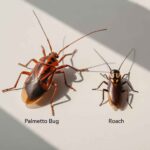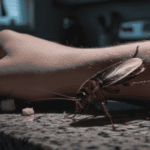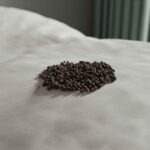Table of Contents
Hearing scratching, squeaking, or gnawing sounds behind your walls? That’s a classic sign of a rodent in wall problem — and it’s something homeowners should address quickly. In this guide, you’ll learn how to get rid of rodent in wall issues, why mice in walls but not in house can still be dangerous, and what exterminators actually do to fix it.
Let’s walk through every step so you can solve the problem fast and keep your home pest-free for good.
1. Mice in Walls but Not in House: What It Means
Sometimes, you’ll hear noises in the walls but never see a mouse in your living spaces. That doesn’t mean your home is safe.
Mice in walls but not in house usually means they’ve found entry points behind baseboards, pipes, or vents. They prefer dark, undisturbed spaces — insulation, wiring gaps, or attic walls — and use them as nesting sites.
Even if they’re hidden, they’re still a threat. A single pair of mice can produce dozens of offspring each year. Left unchecked, that hidden activity becomes a full infestation.
Pro tip: Mice can squeeze through a gap as small as ¼ inch. Use steel wool or copper mesh to block any openings around your home’s foundation and utility lines.
2. Are Mice in Walls Dangerous? Absolutely.
Yes — Are mice in walls dangerous? 100%.
A rodent in wall can create both health and structural risks:
- Fire hazard – Rodents chew electrical wiring to wear down their teeth. This can expose live wires.
- Contamination – Their droppings and urine spread bacteria like Salmonella and Hantavirus.
- Insulation damage – Nesting rodents shred insulation, making your home less energy-efficient.
- Odor – Dead rodents inside walls cause a strong, musty smell that lingers for weeks.
It’s not just annoying — it’s dangerous to ignore. So even if you don’t see them, treat it seriously.
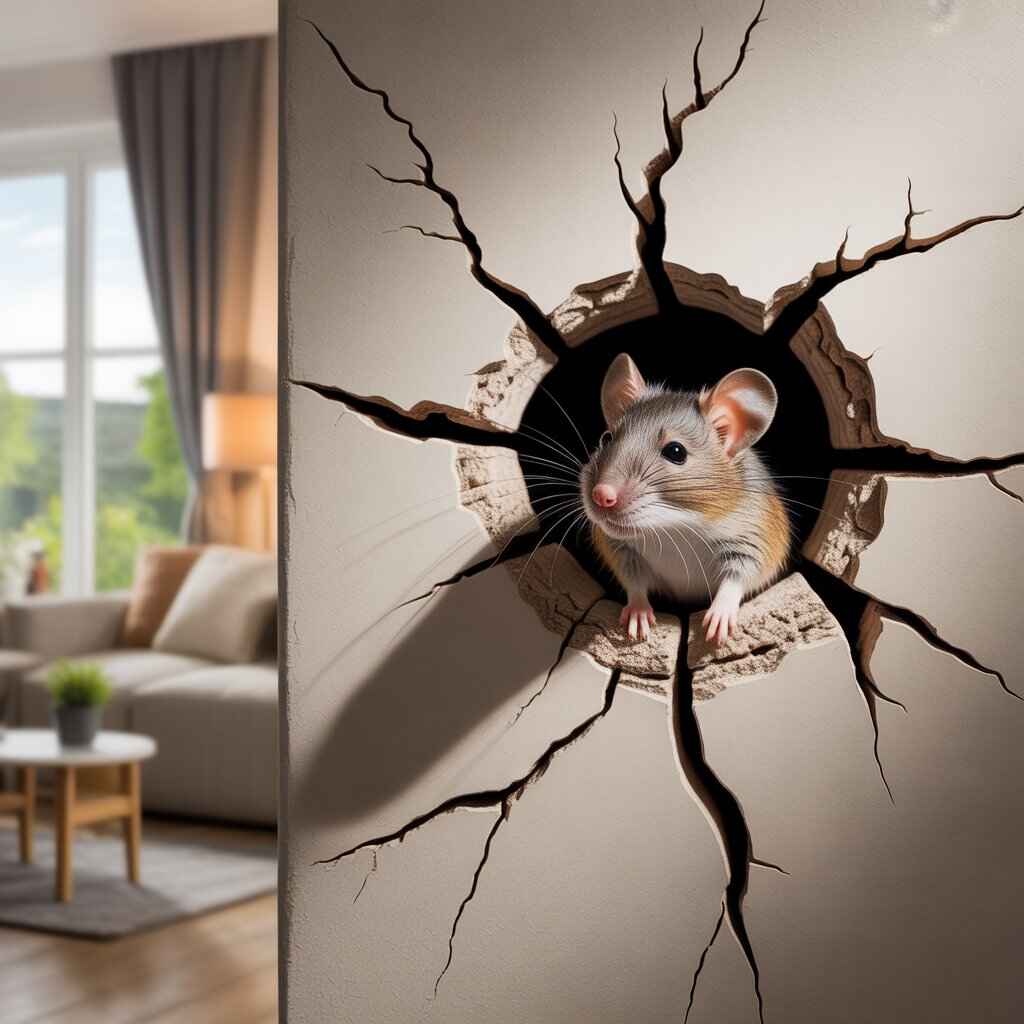
3. How to Get Rid of Rodent in Wall (Step-by-Step Guide)
If you’re ready to take control, here’s a step-by-step process to get rid of the problem quickly and safely.
Step 1: Inspect and Identify
Start by listening during quiet hours — usually late at night.
Check for droppings, gnaw marks, or holes near floors, vents, and corners. Look inside cupboards and attics too.
A homeowner once told me she’d ignored scratching sounds for weeks. When she finally opened a vent panel, she found shredded insulation — a mouse nest. Early action saves time and repair costs.
Step 2: Seal Every Entry Point
Rodents can’t live in your walls if they can’t enter them.
Use caulk, steel wool, or expanding foam to seal:
- Cracks in your home’s foundation
- Gaps around pipes, vents, and utility lines
- Attic access points and crawlspaces
For vents, install rodent-proof mesh to block reentry.
Step 3: Set Traps Where They Travel
You can’t always reach inside walls, but you can trap rodents when they come out to find food.
Place snap traps or live-catch traps along baseboards, corners, and under sinks. Bait them with peanut butter, oatmeal, or chocolate — smells that attract mice.
Check traps daily, remove captured rodents carefully, and reset until no new catches appear.
Step 4: Clean Up Contamination Safely
Rodent droppings and nests contain dangerous bacteria.
Use gloves, a mask, and a disinfectant like bleach solution to clean contaminated surfaces.
If you find droppings behind appliances or insulation, dispose of affected materials in sealed plastic bags.
Never sweep or vacuum dry droppings — it can release harmful particles into the air.
Step 5: Declutter and Remove Food Sources
Mice only stay where food and shelter are available. To make your home uninviting:
- Store food in airtight containers.
- Wipe counters and sweep floors nightly.
- Keep pet food sealed and avoid leaving bowls out overnight.
- Take out trash regularly.
Even crumbs can sustain a small colony. A clean kitchen is your first line of defense.
Step 6: Maintain Your Yard and Exterior
Your yard often invites rodents before they enter the home. Keep it tidy:
- Trim shrubs and trees away from siding.
- Move stacked firewood at least 20 ft from your home.
- Remove fallen fruit or birdseed from the ground.
By eliminating hiding spots outdoors, you cut off their path to your walls.
Step 7: Call a Professional for Severe Infestations
If you still hear scratching or smell decay after DIY efforts, it’s time for professional help.
Exterminators know exactly how to locate nests, seal entry points, and use safe treatments that last. Many offer quarterly plans to prevent re-infestation.
Professionals use advanced exclusion methods and sealed bait stations to protect your home long-term.
4. How Do Exterminators Get Rid of Mice in Walls?
When you hire experts, here’s what typically happens:
- Inspection: They use moisture meters and thermal cameras to detect movement in walls.
- Trapping: They set traps strategically near active zones.
- Exclusion: All entry points are sealed with chew-proof materials.
- Sanitation: They remove droppings, damaged insulation, and dead rodents.
- Prevention Plan: Regular follow-ups ensure the problem doesn’t return.
Professional exterminators often guarantee results — if rodents come back, they’ll re-treat your home for free.
5. How to Get Rid of Mice in Walls Fast
If you want the fastest approach possible:
- Act immediately. The longer you wait, the larger the colony grows.
- Use multiple traps in several locations — not just one or two.
- Block reentry the same day you set traps.
- Avoid repellents — most sprays and electronic devices don’t work long-term.
- Call a professional if you hear continuous movement after 3–5 days.
Speed matters. Mice reproduce rapidly — one pair can become dozens within a few months. Acting fast can stop a small issue from becoming an infestation.
6. Rodent in Wall Dangerous: Health and Fire Hazards You Shouldn’t Ignore
A rodent in wall dangerous situation isn’t just about noise. It’s a real safety risk:
- Fire Risk: Chewed wires cause thousands of house fires annually. (NFPA.org)
- Allergies and asthma: Rodent dander and droppings trigger respiratory issues. (AAFA.org)
- Food contamination: They spread pathogens onto counters and stored food.
- Property damage: Insulation and wood framing often need replacement.
Don’t underestimate it. Taking preventive action early protects both your health and your home.
FAQS:
1. How do I know if there’s a rodent in my wall?
You’ll often hear scratching, gnawing, or scurrying sounds at night. Look for small droppings, wall holes, or a musty odor near baseboards.
2. Are rodents in walls dangerous?
Yes. Rodents chew electrical wires (fire risk) and spread bacteria through droppings and urine, which can lead to serious health issues.
3. How to get rid of a rodent in wall fast?
Seal entry points with steel wool, set traps near food sources, clean droppings safely, and call pest control if noise continues after a few days.
4. How do exterminators get rid of mice in walls?
Professionals inspect, set traps, seal openings, sanitize affected areas, and install prevention barriers to stop rodents from returning.
5. Can I use repellents to keep mice out of walls?
Most sprays or ultrasonic repellents don’t work long-term. Physical exclusion and sanitation are far more effective solutions.
7. Final Thoughts: Stop the Rodent in Wall Problem Before It Starts
Dealing with a rodent in wall can feel overwhelming, but once you understand the signs and steps, you can take control.
Start small — seal, clean, and trap. If that doesn’t solve it, bring in professionals for lasting protection.
Here’s your quick recap checklist:
- Inspect walls and baseboards for holes or droppings
- Seal every entry point with steel wool and caulk
- Set traps with peanut butter bait
- Clean droppings using disinfectant
- Keep kitchen and storage areas tidy
- Maintain yard and outdoor spaces
- Call pest control if activity continues
Your home should be a quiet, comfortable space — not a hiding place for rodents.
Seal the gaps, set the traps, and restore your peace of mind today.

